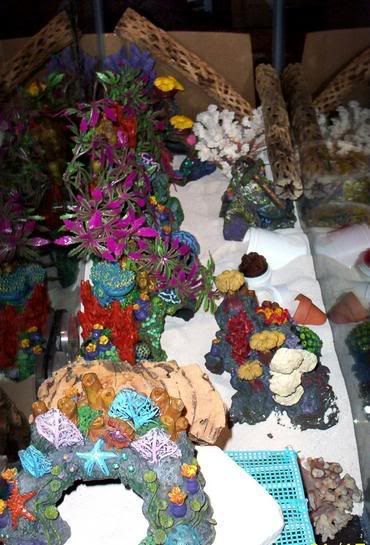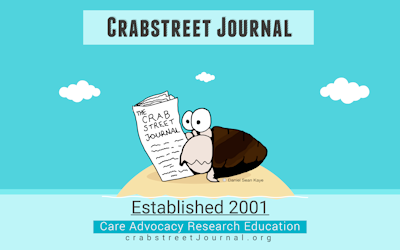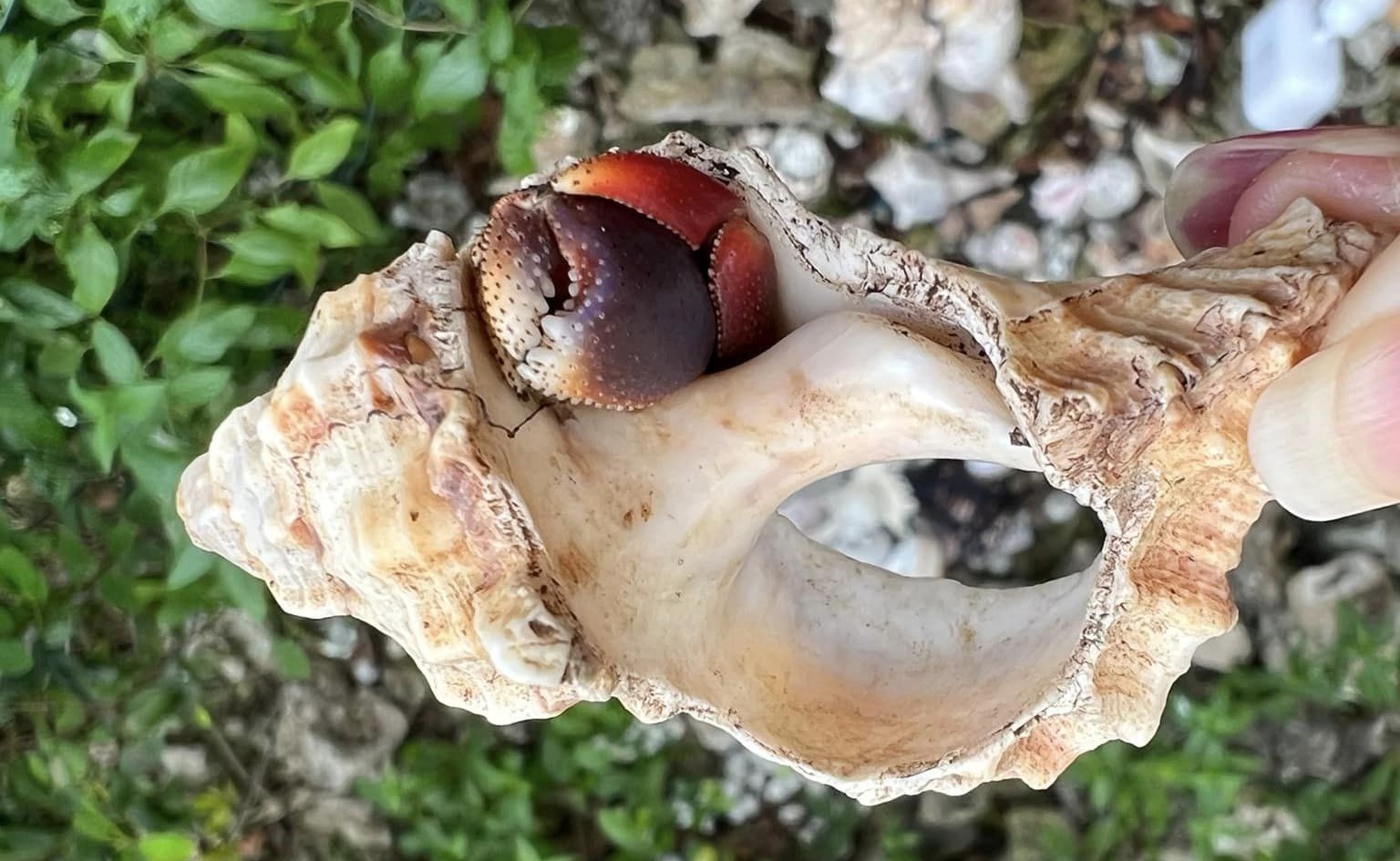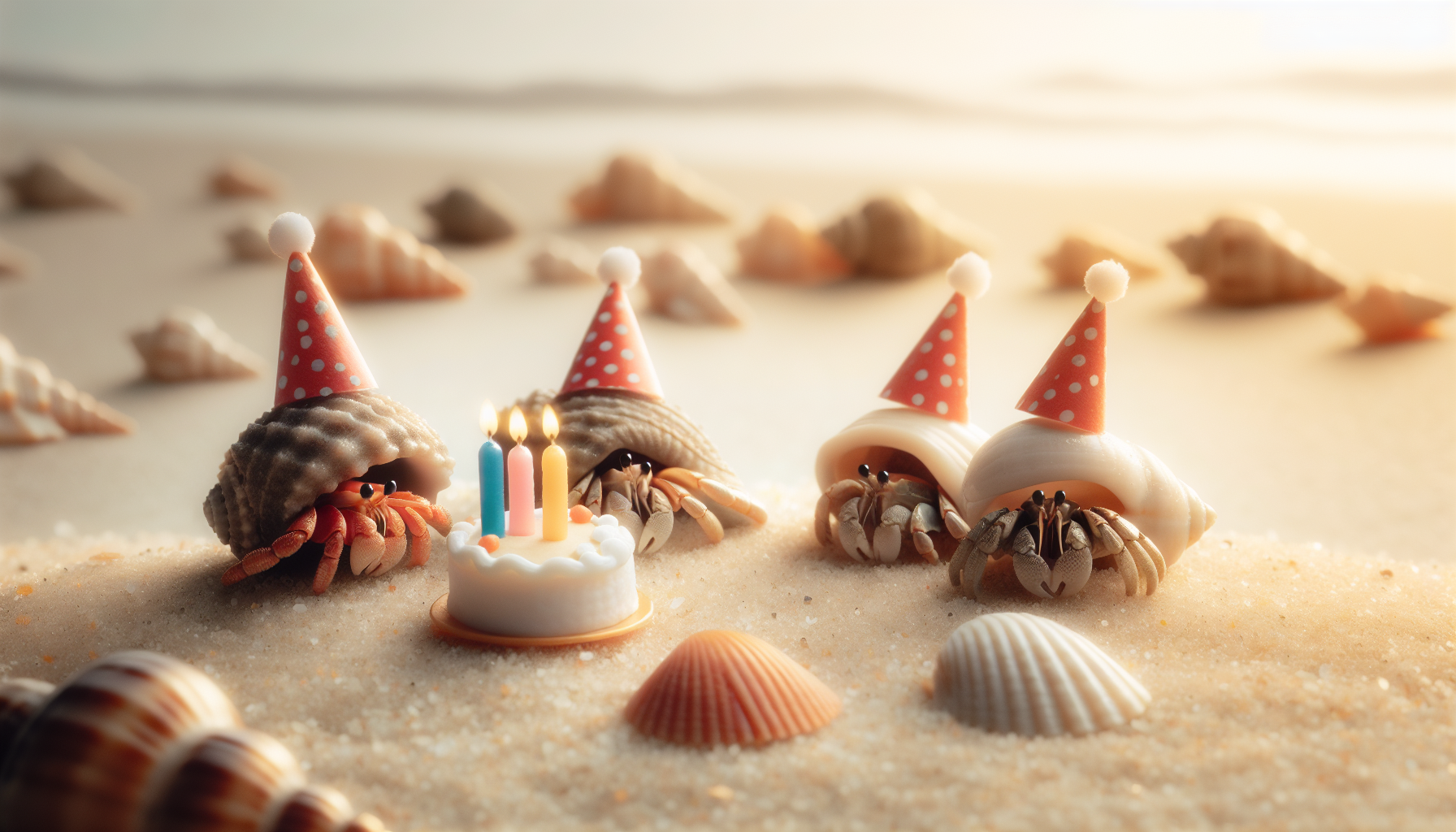Marie Davis writes about moulting and her crabbing method:

On June 17, 2000, we had the privilege of becoming hermie owners.
My daughters received their first ones as souvenirs from somebody who had visited Ocean City, Maryland. My daughters, nor I, had any idea as to how to care for them properly. For this reason,
I had gone to the library for books to read, to research on the internet, and I asked questions at pet stores. There was information on hermit crab care, and yet so much of it varied depending on
which pet store we visited, which web site we were reading, or what author of which book we were reading. We currently have Ecuadorian, (Coenobita Compressus), Carribbean, (Coenobita Clypeatus), Indo, (Coenobita Brevimanus), Rugs, (Coenobita Rugosus),Strawberry’s (Coenobita Perlatus) and their cheliped measurements range from 1/4 inch to 2 inches. The following is the care we have done with our hermies, and to date have had great success in doing so. Daily they have access to Ethoxyquin free foods that are rotated, (which is an insecticide/pesticide). FMR Treat, Tetra Dried Baby Shrimp, Tetra Freeze Dried Bloodworms, Crushed Oyster Shells, a tad of T-Rex Calsi-sand, Ocean Plankton, Hikari Tubifex Worms, Hikari Daphnia, Flukers Mealworms, Julian Sprung’s Sea Veggies, Hikari Sinking Wafers, Hikari Cichlid Gold, ZooMed Leopard Gecko Food, Zoo Med’s Anole Food, Freeze dried crickets. We call this the dry food dish. In another dish, we offer various fresh foods such as fruits, vegetables, non-sugared cereal, Kaytee Healthy Toppings bird food, (such as mixed nuts, coconut, carrots & greens, apple bits, banana chips, mixed berries, carrots & sweet potatoes, Pumpkin seeds & almonds, etc.), bread, etc. We never offer any citrus foods or dairy products. Even though the hermies have access to the dry foods 24/7, the fresh food dish we offer on a nightly basis before going to bed, and remove it promptly in the morning when we awaken. Within all our main tanks and iso tanks, they have access to a choya log and cork bark which they do munch on. Before their bath, our hermit crabs are also offered out side of their tank in a large Tupperware type container honey, silversides, sardines, etc.
For the water ponds in the hermies tanks, I only use distilled bottle water. I use Instant Ocean for the ocean water pond, and I mix it per the package instructions. I mix a smaller amount to be sure it stays fresh. I use 1/2 cup Instant Ocean, per one U.S. gallon of distilled water. Once it is prepared, I do not offer it to the hermies for at least 24 hours, shaking it numerous times within that 24 hours, and testing the salinity with a hydrometer. Each time it is offered to the hermies, the ocean water container is shaken extremely well. By doing this the ocean salt is distributed evenly, instead of when at the end of the container the hermit crabs get an over dose of ocean salt possibly causing permanent damage to their gills, or other complications.

Usually on Sunday, we try to bath our hermies in distilled bottle water. On the non-bath nights, we do mist all of our hermies with distilled water with no additives. After their misting/bath, the hermies get a minimum of at least 30 minutes of exercise in a plastic baby pool that has various climbing objects and tunnels to explore. The substrate in our main tanks and iso’s is CaribSea Aragonite Sand, which is an aquarium safe, dye/color free substrate.
We clean our tanks daily with an aquarium fish net for food and waste materials. We keep our substrate as dry as possible, removing any wet sand at this time. If on rare occasions we have a premolter who wants the sand damp, we will put him in the iso tank so he can make the substrate the way he wants it without disturbing him.
In both our main tanks and iso tanks, I keep the humidity at 75 as much as possible, and the temperature of the substrate at 78-80 degrees on the UTH side of the tank. Our iso tanks are set up as mini main tanks with coral, cholla log, cork bark, fuller rock, huts, dry food dish, ocean and fresh water ponds, etc.
If I find a molter in one of our main tanks, I do remove them and put them into an iso tank if they are done molting. I use my hands, supporting the molter in the palm of my hand, and gently place him on top of his exo while talking to him in a gentle voice that he’s use to. I place a hut over him and I place an oyster shell in the fresh water and ocean water dishes extremely close to the molter so he has easy access to the waters if he wants/needs them. Forty eight hours after molting, I remove him from the iso tank, supporting his weak body and shell at all times, and lightly mist the gill area of his body. After lightly misting the gill area, I gently dab the access mist off the shell if there is any, with a clean paper towel. I then carefully put the molter back into the iso tank with his exo at the opening of his shell and the hut back over him. At this time, I then take the water dishes and oyster shells and replace them with sterilized ones, and wash the water dishes out with hot water. I do this daily, and I do speak softly to the molter as I am doing this. Speaking softly to our hermies is something I do throughout the day while they are in the main tanks and iso’s. When the molter has eaten the softer parts of the exo, I then crush the harder parts of the legs and pincher’s as fine as I can and put them in an oyster shell for them to eat. After 24 hours of the molter munching on the drier parts of the exo, I then make another dry food shell to be put next to the molter’s exo shell. This first shell consists of Dried Baby Shrimp, Ocean Plankton, Krill, crushed powdered oyster shells, Calsi Sand, Boiled Egg Shell, Spirulina, and FMR Treat, etc. I put each food into its own little section of the shell instead of all mixed together.
The day after I offer the above food shell, I then offer all the dry foods the hermies get while they’re in the main tank. Where as I do change the dry food in the main tanks every two days, (unless they get wet before hand), I change the dry food in the iso daily at the time I change the water in the water ponds. Our molters seem to be a little fussy, and seem to eat fresh dry food faster than food that has sat for two days. When the molter is eating well, their coloring has darkened, and is scooting about the iso tank without appearing weak, on the next bath day I bathe the molter with his tank mates so they all smell alike. If he is ready prior to bath day to return to the main tank, I will dip them in the large fresh water pond to rinse the molting odor off of him and to help him smell the same as his tank mates. I check several times to make sure not incidents are occurring upon his re-acquaintance with his tank mates. If he is ready by bath night, once all have had their bath, they have time in the play area to become reacquainted under close supervision. If there are no incidents amongst the hermies, all are returned to the main tank.
Diet and exercise are very important with all creatures to maintain good health. I believe that for a hermie to have a successful molt, he must be in overall good health prior to molting. I attribute their care, diet, and exercise our hermies get prior to molting as important as the care they receive once they molt.
Because of a hermie being so fragile once they molt, I believe their gills are even more sensitive than usual. This is why I lightly mist the gill area 48 hours after they molt to keep them moist. Because of our daily handling the hermies with mists or baths, and also handling a few other times during the day, our hermies aren’t threatened when handled after they molt. In fact, the first time our molter is picked up 48 hours after they molt, they happily come partially out of their shell to great the misting of their gills. I attribute all the care given mentioned in this article as to why I have such a high successful molter rate.






